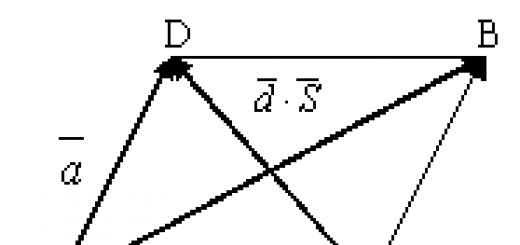At the time of buying interior doors you need to be prepared for the fact that the accessories for them in the kit may not go. You get a canvas and racks from which doors are made. And in this canvas, a hole for the handle will not even be drilled. The thing is that the product can be very different, have a peculiar design and size. And the handle, which will be installed in advance, may not please the residents. In this case, you need to install a door handle on the interior door. This work can be done by hand. You just need to buy a suitable handle and install it.
What types of pens are there? What is the difference? How to install a handle on an interior door? You will learn all this by reading our article.
Interior door handle
To begin with, let's consider what a similar pen is in general. We are all familiar with them, but it is unlikely that the majority thought about it. design features. It is important for us that she helps to open the door. However, during installation it would be nice to get acquainted with its design. Here's what's in a standard doorknob:
- Handle for opening doors (2 pcs.).
- Decorative rings that cover the bolts and fasteners of the handle.
- One rod or bar of metal that connects one and the other handle of the handle.
- The socket is the body of the mechanical part of the structure, in which locks, springs and a tongue cannot be dispensed with.
- Stoppers that limit the movement of the tongue and handle.

But, in addition to the standard configuration, all handles for interior doors differ in the installation method, their shape, principle of operation, material and the presence of a lock. If we talk about the installation method, then there are two types of door handles:
- overhead or stationary;
- mortise.
Overhead - pretty simple products, which are enough to attach to the door leaf. The work is easy and fast. But the mortise door handles are installed in the canvas in the mortise holes. Here you will have to work hard.

As for the way the door handles work, they are divided into the following types:

If we talk about the materials from which they are made, then there is plenty to choose from. Some are made of wood, others are made of metal (aluminum, brass), there are even glass, plastic and stone interior handles. The most popular are metal products coated with chromium, nickel, etc. The material guarantees the wear resistance and service life of the handle.
Note! Products can be equipped with a lock or sold without it. This is chosen according to the needs of the user. When the doors often have to be closed as needed, it is better to stop at models with a latch and put it on.
Nuances before installing the handle
Have you ever wondered how high the handle is? This is very important, because if placed incorrectly, it will be inconvenient for users to use it. If it is high, it will be difficult to reach, and if it is low, you will bend down. In fact, there is no single standard that is used to guide the installation of a handle with or without a latch. However, there are some recommendations.

During operation, it was noticed that the best option for placing a handle for interior doors regarding height is a distance of 1 m from the floor. But, each owner can raise or lower this value, based on their own preferences and the growth of family members. It is important to remember one more thing - focus on the height of the handles that you already have in your home. Then it will be easier to choose the best option. Having all the knobs at the same level will make them easier to use.
Tools to get the job done
Before you start installing handles on the door, it is important to make sure that you have all the necessary tools for the job. They are simple and can be found in everyone in the house. Here is the list:
- chisel;
- pencil or marker, square and tape measure;
- drill;
- drill, crown;
- screwdriver

With this set of tools, the job will be much easier. It is clear that you can embed the handle fittings without a crown with a screwdriver, but this will take more time and effort. A crown is an attachment for a drill, thanks to which a perfectly even hole can be made in the canvas in just a few moments.

It is more convenient to work when the door is removed from the hinges. This makes it much more convenient to work. Therefore, do not rush to install it in its place immediately after purchase. When it is impossible to remove it, then you need to properly fix it so that the canvas does not move during operation. This is how you can clearly and correctly mark up and embed the lock.

Another important point is to read the instructions for the pen. We are accustomed to resorting to it only after wrong actions. However, to avoid them, you just need to read the instructions first. It will indicate all the dimensions, thanks to which it will be possible, ideally, to choose the diameter of the pen and the crown.
Now you can consider the installation instructions, which will help you cope with the task quickly, easily and without errors. And for those who take up such work for the first time, a visual video will be provided.
What's to be done
Consider the list of steps after which the door handle will be installed in its place. All work consists in performing 6 steps. Here they are:
- Marking the canvas.
- Creating a hole for the lock.
- Lock installation.
- Handle notch.
- Applying markings on the loot.
- Creating a groove in the loot.

This is how the handle is installed on the interior door. In order not to miss important details, let's look at each step separately.
Stage 1 - marking the door leaf
Have you already decided on the height of the handle fixation? If not, then it's time to do it. After all, the markup will be performed based on this indicator. To properly mark up, you will need a square, tape measure and pencil. With their help, you need to mark on the canvas the places for the holes for the handle. You should measure the distance from the floor and draw a horizontal line with a marker. They are already moving further from it, transferring the markup to the end of the canvas and to the opposite part.
Now you need to mark the place on the end where exactly the hole for the lock tongue will be placed. Along the same line, on each side of the door at an equal distance from the beginning (approximately 60 mm), a place is marked for installing the handle itself.

Stage 2 - creating a hole for the lock and handle
Using a drill and crown, a hole is created for the handle. You will need to drill the canvas on each side, deepening exactly half the thickness of the door. To make the work more convenient to perform, experienced craftsmen recommend making a mark on the crown with a marker. Why not just drill a hole on one side? So the crown can go to the side and the hole will be uneven. In addition, on the opposite side, the door trim can be damaged and damaged. The drill is held strictly at an angle of 90 degrees. It is important to avoid deviations in any direction. And with a chisel after work, you can remove and smooth out all the bumps.

As for the hole for the lock, it is made with a drill with a pen of the required diameter. The work is done carefully, because the distance between the corner of the butt and the pen itself is not very large. There is an opinion that it is better to make a hole for the latch first, and then deal with the handle. But, in what sequence to carry out the process is everyone's business.
Stage 3 - installation of the door lock
This is a simple task when the lock hole is completely ready. It remains only to insert the lock into it. The lock pad is applied on top and circled around the edges with a pencil. Next comes the chisel. With its help, a layer of wood equal to the width of the lining is removed from the marks. Then it can be drowned in the end of the door. To simplify the task, chisels of different widths are used.

The overlay is fixed in the prepared place with screws. it is recommended to make holes for them in advance using a thin drill. It is enough to attach the overlay to its place and mark the attachment points with a pencil.

Stage 4 - handle insert
It's time to get on with the pen. They come with screws on the outside. It is not necessary to disassemble this type of handle. It is only necessary to stop one part in place, falling into the latch hole with its two guides. They have screw threads. After that, the second half is attached and the two parts are pulled together with each other by means of bolts. Twisting is done evenly so that the handle works without problems, and the latch has a simple move.
If the handle has a hidden screw, then it will need to be disassembled. How to disassemble the door handle of an interior door? Often, such handles come with assembly and disassembly instructions, as well as keys for this. Based on it, we disassemble the structure, fasten the collapsible part with bolts and install the handle in its place. You should not use brute force, if everything is done correctly, then the assembly will be easy.

Stage 5 - marking on the loot
At this point, the door handle is ready. It remains only to complete some details regarding the loot. It will need to cut a hole for the tongue and lock (if any). If you want the door to open and close easily, you will have to make high-quality markings.

To do this, you will need to close the interior door and mark the location of the tongue and lock on the loot from the front, marking their top and bottom. The exact middle of the castle is determined for the squares and the marking is transferred to the end of the loot. Now everything is ready for the final step.
Stage 6 - creating a groove in the loot
Focusing on the markup, using a drill and a pen, a hole is made for the tongue and lock. All excess is removed with a chisel. Next, the overlay is installed. But, before installing it, it is important to check the performance of the handle for interior doors. You will have to close the door and check if the tongue from the handle and the lock enter. Do not be surprised if the closed door will play a little or stagger. The thing is that the groove is not yet equipped with an overlay.

Now it's time to fix the bar. It is fixed flush so as not to interfere with the smooth running of the door. In fact, the work is no different from fixing the lining on the back side. Everything superfluous is removed with a chisel, holes are drilled, and the overlay is fixed with the bolts included in the kit.
To help the inexperienced cope with the task, we have prepared a visual video that will show how to install door handles on interior doors.
Conclusion
Do not be upset when the door you bought does not have handles. On the contrary, this is good, since you can choose a product that will be convenient in your case. And since there are so many options, there will be plenty to choose from. With the installation of the handle on the interior door should not be a problem. Thanks to step by step instructions She'll be up and running in a few hours.
This article will help you figure out how to embed a latch handle into a door leaf. Adhering to the work algorithm described in the article, you can easily do this operation yourself, with a minimum set of tools and very quickly.
No door is complete without a handle. The most popular type of interior door handles today is the latch handle.
The design of handles of this type is such that, regardless of their appearance, they are all installed in the door leaf in the same way. How to do it yourself will be discussed in this article.
Latch handle design
The pen itself, that is, the visible part of it, may look completely different. So:

or like this:

All these latch handles consist, in fact, of two parts - the handle itself:

and latch mechanism:

Both parts of the latch handle require a separate insert into the door leaf.
Latch handles are available without a latch - the door with such handles is not locked from the inside, with a latch - an additional rotary mechanism installed on the handle and allowing you to lock the door from the inside, and a key - on one side of the handle there is a turnkey mask that allows you to lock the door from the outside, on the other, a latch . All handles have design differences that do not affect the tapping process. The inner part (latch) is also the same, that is, it cuts in the same way for all types of latch handles.
So let's get started.
Required tool
To make the installation of the latch handle as easy as possible, you will need:
- Hand drill or screwdriver.
- Crown on a tree with a diameter of 50 mm.
- Drill for wood with a diameter of 23-24 mm.
- Chisel.
- Hammer.
- Pencil.
The crown and drill can be bought separately, or as a set, which is called the “Set for inserting latch handles”.
Installing the latch
1. We begin the installation process by marking the door leaf for drilling. The marking scheme, as a rule, comes with the handle.

If there is no scheme, then you can mark it manually. To do this, put a mark at a distance of 60 mm from the edge of the door.

2. On the side edge of the door along the axial marking line, mark the center for drilling.

3. Using a chisel, we hollow out a three-millimeter recess under the front latch plate. It makes sense to pre-mark the center with an awl so that you do not have to mark it again.

4. We drill a through hole with a crown with a diameter of 50 mm. It is better to do this on both sides of the door in order to avoid damage to the door covering at the exit of the crown when drilling.


5. As a result, we get such a hole:

6. Go to the side edge. With a drill for wood with a diameter of 23-24 mm, we drill a hole for the latch into the marked center. You should not make it too deep, otherwise you risk drilling the door through to the panel.

7. We already get two holes.

8. Install a latch in the side hole and screw it with self-tapping screws.

9. Filming upper part pens. To do this, we are looking for a hole on the side.

Using the supplied key or any other thin flat object:

press the tongue inside the hole:

and remove the handle itself:

10. Remove the decorative trim and, thereby, open the mounting holes.

11. Insert the outer half of the handle.

12. Insert the inner half. We tighten both with the screws that come with the kit.

13. We put on a decorative overlay and a handle body. Do not forget to press the inner tongue with the key.

14. With the door closed, we mark the place where the latch tongue of the door jamb touches, after which we hollow out a recess under the latch tongue in the resulting place.

15. Insert a decorative plastic pocket.

16. We fasten the metal plate.

17. The handle is installed.

If there is no drill, then all holes can be made using a suitable chisel, however, in this case, installing the handle will require more serious repair and construction skills and can be an impossible task for an unprepared person.
Sold without accessories. You will have to purchase and install the door handle separately. The work is simple. Installation can be done independently, you only need a certain tool.
Products differ in the material of manufacture, design, working mechanism. Accessories are selected according to the style of the room, taking into account ease of use. By type of attachment are:
- Overhead. The fittings are simply screwed with self-tapping screws to the surface of the canvas.
- Mortise. Often come with a lock or latch. Mounting of accessories involves cutting a groove and drilling a through hole in the body.

All mortise models are divided into two types:
- Knobs. The fittings are equipped with a swivel mechanism that moves the latch. Usually the handle itself is made of a spherical or disc shape.

- Push models. The mechanism functions according to a similar principle, only to activate it, the handle must be pressed. Fittings complete with a lock are in demand for interior and exterior doors.

pressure Models are further divided into two types:
- Mechanism with handle and latch complete. Such models are inexpensive, but not durable. They quickly loosen and fail.

- Handle, latch, wrap and the mechanism itself (with a tongue or magnetic) are selected separately depending on preference. Such products are better and more reliable than the first option.

Common material metal alloys or aluminum are used for the production of fittings. Overhead models can be made of wood. For expensive canvases, stone and glass handles are produced. The cheapest option is plastic. Metal elements are chrome plated or nickel plated.
Products differ by type of castle. The simplest locking element is a latch. The lock can be locked with a key on one or both sides. In the first version, a latch replaces the key on the inside of the room.

Required Tools
To install the handle on the interior door with your own hands, you will need the simplest carpentry tool:
- electric drill;
- nozzle crown with a diameter of 50 mm;
- pen drill with a diameter of 20–25 mm;
- pencil;
- screwdriver;
- hammer;
- chisel.
The template for installing door handles, sold with the product, will help facilitate installation. If one was not in the package, it can be printed from the Internet. The template is a 1:1 scale diagram of the movement case. It is applied to the canvas to mark the groove and hole. If it is planned to install a large number of handles, a jig is cut out of wood for drilling.

How to install a door handle?
They determine the height of the installation of handles on interior doors according to their preference, but usually they keep a distance from the floor of 0.9–1 m. The indicator may depend on the height of the people living in the house. To maintain the aesthetics, the handles of all canvases are placed at the same height.
They begin the installation of door handles on interior doors with markings, but first the canvas is lightly tapped. The sound determines the density. Modern doors often go empty inside. The wooden frame is made only along the perimeter and jumpers are installed. If the fittings fall into the void, then it is impossible to fix it.

The handle is being installed on the door removed from the hinges. If the canvas cannot be painlessly dismantled, then it is wedged in the open state. Each model has its own design features. Therefore, before inserting, it is important to read the attached instructions and take measurements. They will help you accurately select the drill nozzles according to the diameter.
Mounting the latch handle
They begin installing the latch handle on interior doors by choosing a full-bodied place and marking. Usually the manufacturer attaches the scheme. In its absence, manual marking is done simultaneously with the sidebar:
- First, a mark is placed from the edge of the canvas at a distance of 60 mm. At the end, a center line is drawn, the center is marked for the future hole.
- To make the front plate of the latch body flush with the wood, a nest 3 mm deep is selected with a chisel at the end of the door leaf.
- For further installation of the knob handle, they take an electric drill with a crown and drill a through hole in the canvas. It is important to be careful to avoid damaging the decorative coating of the canvas.
- A hole is drilled from the end of the sash at the marked center with a pen drill. Its depth and diameter is equal to the size of the latch body. It is impossible to drill deeper, as there is a risk of damage to the panel. The latch is inserted inside, fixed with two self-tapping screws.

- To install the knob, it is first disassembled. There is a technological hole on the side, inside of which there is a latch - a tongue. When pressed with a key, the handle can be easily removed.
- The next element is to remove the decorative trim. The outer half of the handle is inserted into the hole in the door, and on the other hand they put the inner half and both elements are bolted together. Now it remains to put in place the decorative trim and the handle itself.

- Continuation of the installation of the door handle with a latch provides for the fastening of the striker. The sash is completely closed and they try to mark on the boat the place where the tongue of the locking mechanism fits. According to the marking with a chisel, a recess is selected, a decorative pocket is inserted, a steel patch plate is fixed on top with self-tapping screws.
At the end of the work, the operability of the mechanism is checked.
Installing a handle with a lock
Installation of a door handle with a lock is complicated by gouging a large groove in the end of the leaf for the body of the locking mechanism. The work consists of the following:
- The lock is applied to the end surface of the canvas. Draw a pencil around the back of the body. According to the markings, holes are drilled with an electric drill, placing them as tightly as possible. The remaining jumpers are selected with a chisel. It is better to make a hole with a pen drill, and its diameter should be a couple of millimeters larger than the thickness of the body of the locking mechanism.
- A lock is inserted inside the groove. At the end of the sash, a contour of the front plate is drawn with a pencil, a recess is chosen with a chisel under it.
- Having attached a lock to the side surface of the canvas, mark the hole for the handles. Below, they designate and make a hole for the keyhole.
- The lock is installed inside the groove, fixed with screws. A metal square is inserted, decorative overlays are put on. Handles are put on the square. Each lining is fixed to the sash with self-tapping screws or through bolts, which depends on the model.
- With the door leaf closed, the boat is marked for the striker. After sampling the recess with a chisel, the plate is fixed with self-tapping screws.

After installing the lock, check its performance.
Installation of handles for sliding doors
To insert a handle into a sliding-type interior door, you only need a drill, a chisel and a screwdriver. You can simplify the task with a milling cutter. Typically, sliding door handles are oblong in shape. They consist of a plastic insert, on which a decorative overlay snaps into place.
The handle is installed on the compartment door as follows:
- The plastic insert is applied to the side surface of the sash. Outline with a pencil.
- Using a drill and a chisel or a milling cutter, a groove is selected. Its depth corresponds to the thickness of the liner. Usually 12-15 mm is sufficient.

- An insert is inserted inside the groove, fixed with self-tapping screws. The decorative overlay, which acts as a handle, is simply snapped on from above.
- A similar action is performed on the reverse side of the canvas. If the shape of the handle is round, the recess is selected with a pen drill. Hardware may come with a lock. For its tie-in, a groove is selected at the end of the sliding door, and a reciprocal bar is attached to the boat.
Mounting the handle with magnetic lock
To insert a handle into an interior door with a magnetic latch, perform the same steps as when inserting a conventional lock. For smooth snapping, you need to correctly install the reciprocal bar.
With the door closed on the boat, they try to accurately mark the upper and lower edges of the castle. A reciprocal bar is applied to the markup, a groove for the magnet is marked. A hole is made with a drill bit. A magnet is placed inside the groove. A reciprocal bar is screwed on top with self-tapping screws, without deepening it flush. If the plate is sunk into the sample, over time, the weakened magnet will no longer hold the canvas.

Installation of stationary handles
There are two types of stationary handles, but they are all easily attached to the door. Overhead models are simply fixed with screws to the surface of the canvas. For a through option, the door is drilled. A threaded pin is inserted through the hole and the handles are screwed on both sides.
Installation of fittings on the door leaf is within the power of each owner. It is important to initially correctly mark up and understand the mechanism of the product.
At first glance it may seem that this work does not require effort and is quite simple to perform, but it is not. In order for the installation of door handles to be successful and correct, installation is carried out in stages in compliance with all instructions.
Classification of door handles
Door handles vary in both appearance and material. Therefore, the installation of door handles begins with their choice. You can put a stationary handle on the interior door, which does not interact with either the latches or the lock. It is fixed with screws or tie-down screws. The door handle with a push mechanism uses a latch latch that cuts into the door. In this case, the latch is removed only under mechanical action, i.e. when you press the handle, and so it is always in the extended position. Installation of fittings with a swivel mechanism is great for the toilet and bathroom, since on the one hand it can be opened and closed with a key, and on the other it has a locking button or latch.
When choosing accessories for a door, you need to decide on the material from which it is made. You can use a door handle made of metal, such as aluminum, brass, steel, etc. wooden element made from precious woods. To serve for many years, it must be made of solid material. You can also install glass handles made of Bohemian glass or natural stone yourself. For utility rooms, elements made of plastic and other artificial materials are mounted. When making your choice, you need to remember that the fittings must be combined with both the door and the interior of the room.
Installation instructions for door handles

Required:
- roulette;
- square;
- awl;
- chisel or chisel;
- hammer;
- electric drill;
- screwdriver;
- door handle fittings.
Doing the installation of door handles with your own hands, you must follow the instructions for installing them to obtain a high-quality result. First, the height at which the fittings will be installed is noted. When marking it, the average height of family members is taken into account. Basically, the installation of door handles is carried out at a distance of 80-120 cm from the floor. Having decided on the height of the position, a mark is made in this place with a pencil. In this case, the fittings are applied so that the tongue protrudes completely from the door.
All marking should be done using a square. To do this, first draw a line on one side of the door leaf. Then, retreating from its edge by 60 mm, an appropriate mark is made with an awl. After that, with the help of a square, a line is drawn on its end, which is pierced with an awl in the middle, and the same marking is made on its other side. Further, for the installation of door fittings, you will need a drill with a special drill with a crown, which comes in various diameters. First, a hole is drilled on one side of the canvas to a depth equal to half its thickness. For this, a corresponding mark is made on the crown. Then, by analogy, installation is performed on the other side. At the same time, during operation, the drill must be kept strictly at a right angle, in no case deviating it to the sides. The resulting hole will house the door handle mechanism.

For the subsequent installation of the handle with your own hands, the crown changes to a conventional drill, with which a hole is mounted from the end of the door leaf. It is necessary for the tongue protruding from the door. You need to drill a hole for it, evenly moving the drill. After that, a contour is punched with a chisel or chisel, a selection is made and a latch is applied. If everything is done correctly, then it should be located in the same plane with the end of the door leaf and at the same time be completely recessed. At the end, the latch is fixed with screws.
Further, the fittings are applied to the place of its location and the holes for the bolts connecting the handles on both sides are marked with an awl. At this stage of work, you will need a drill that is matched to the size of the hole. After all the marked places are drilled, the design of the fittings for the door is assembled. To do this, one of its parts is first inserted, while falling into the special holes of the latch using guides. Then its second part is substituted and everything is pulled together with bolts.
Final installation step
Required:
- awl;
- bit;
- hammer;
- electric drill.
After installing the hardware, door frame a metal frame is installed.

First, markings are made for the hole for the tongue. In order for everything to work out exactly, it is necessary to apply either a drop of oil, or paint, or toothpaste to its end. Then the tongue is removed into the door, and when it is closed, the handle rises and falls several times. At the same time, a clear trace of the applied product will be imprinted on the box. You can also mark up by inserting a metal ruler into the gap between the closed door leaf and the box, first at the top of the tongue, then from its bottom side, making the appropriate marks with a pencil.
Further, a metal frame is applied to the markings on the door frame and the place of the subsequent selection for the tongue and plate is marked. First, a selection is made under the tongue. To do this, with the help of an awl, a mark is made on the inside, and then a hole is mounted under it with a chisel or chisel.
Before proceeding with the selection of the contour for the frame, you should check the correct installation of the tongue, i.e. it should come out of the latch completely, and the door itself should close well. Then the metal frame is fixed with screws to the box. To properly install door hardware, you must clearly follow all the instructions. And as a result, the handles will be easy to push and the latch is also easy to walk on.
Door hardware repair manual
Required:
- Screwdriver Set;
- screwdriver
During operation, the fittings on the door may loosen or come off. In this case, its repair will depend on the type of handle. If it has a spherical or similar shape, then its fastening is carried out using a through pin. To repair it, you need to turn one of the handles counterclockwise with the door open, fixing in place the other part of it and the decorative lining. When they are separated, the pin should remain in one of them. Next, you need to adjust the pin and, putting back the lining, insert the element with the pin. Then, on the other hand, attach another part of it, and carefully wrap everything with your hands, without using tools.
When repairing a door handle in the form of a bracket, you need to screw in all the screws with either a screwdriver or a screwdriver. In the event that the screws are scrolled, they must be unscrewed. Further, moving the handle on one side so that it covers the old holes, on the other side of it, all the screws are screwed into new places. To avoid their scrolling, you need to screw them in without effort. Fittings of this type are arranged vertically for convenience.
Can you imagine ordinary doors without a handle? It would seem that such a simple design, but in fact a very important attribute. Installing a door handle on an interior door is a task that consumers face when buying and installing a new door leaf. It is quite possible to solve the problem on your own. It is only important not to make a mistake with the choice of design.
Types of door handles
There are various types of handles that are different from each other in color, shape, material, mechanism and installation method. If we take the last feature as the basis for the classification, then two types of handles are distinguished:
- Overhead.
- Mortise.
Installation of first class products is simple and hassle-free. They are simply fixed to the surface of the canvas, unlike other types of products. Installation of mortise handles involves pre-drilling a hole in the door leaf.
Mortise devices are divided, in turn, into two more types:
When buying accessories, pay special attention to what raw materials it is made from. Products are made of metal, wood, glass or natural stone. They should be selected according to the color and model of the canvas, as well as to the style of the interior.
 For sliding systems, hidden handles can be installed
For sliding systems, hidden handles can be installed It is worth noting that the handles are of a hidden type.. They are designed for sliding systems such as sliding doors. When the doors move, the products do not interfere, do not spoil the wallpaper and walls.
Installation height
At what height to mount the handle, it is not clearly spelled out anywhere. Behind the scenes, it is installed in products made of mdf and timber at a distance of one meter from floor covering. It can be lowered or raised a little - it all depends on the taste of the owner of the living space.
 The installation height of the door handle is approximately 1 m
The installation height of the door handle is approximately 1 m The height of the installation of the product is affected by the growth of the residents. As practice shows, a handle at a distance of 1 m is the best option for adults and children.. When installing, also consider the level of the handles on other doors. Products must be at the same height.
Required Tools
To put the handle, arm yourself with tools, without which it will not be easy to do this:
- simple pencil;
- square;
- roulette;
- chisel;
- screwdriver;
- drill;
- drill;
- crown.
The crown and screwdriver can be replaced with other improvised means, but the quality of work will suffer from this and it will take a lot of time.
Before installation, read the instructions for the product. All sizes are indicated in it, which will help you choose the right radius drill bit and crown.
Step by step installation instructions
If you haven't come across this issue before, don't be afraid. Even someone who is not connected with the construction is able to cope with the installation of the handle. You just need to follow the detailed scheme step by step. 
Web marking
 The installation of the handle begins with the marking on the door
The installation of the handle begins with the marking on the door Marking is where the whole process begins. Having calculated at what height the handle will be located, put marks on the door in those places where the holes will be made.
Use a simple pencil, tape measure and corner and draw a horizontal line on the flat surface of the canvas. Then transfer it to the end and the opposite side of the sash.
We put a mark on the end part of the product in the center of the drawn line. She points to a place designed to deepen under the tongue. From the edge of the leaf at a distance of 0.6 cm, draw a point on both surfaces of the door. This place is for the handle.
Drilling holes for the handle and lock
It doesn’t matter at all in what order you make the holes: first for the handle, and then for the lock, or vice versa. Just remember that business does not like haste.
For the handle, the opening is drilled with a drill and a crown. To make it even and neat, it is necessary to drill from the inside and outside of the door to a depth equal to ½ the thickness of the canvas.
Masters advise for greater accuracy to mark this depth on the crown with a felt-tip pen. By following this rule, you will definitely not damage the product.. To make the hole even, hold the drill straight and do not allow it to swing to either side.
 When drilling a hole for the handle, the drill must be held straight
When drilling a hole for the handle, the drill must be held straight To insert a latch into an interior door with your own hands, arm yourself with a drill and a pen. In this case, you need to be extremely careful, since the gap between the pen drill and the end angle is small.
Lock installation
The mechanism must be inserted into the opening drilled under it. Press the overlay to the end of the product and outline it with a pencil on all sides.

Then clean the canvas from the top layer with a chisel and make a recess the size of the thickness of the lining. This is done in order to push it into the door.

The lining is fixed with screws. Recesses for them are made even before the implementation of fasteners.
 Fixation of the lining is carried out with self-tapping screws
Fixation of the lining is carried out with self-tapping screws Handle inset
Products with screws located outside do not need to be disassembled. When installing one component of the structure in place, you must try to get into the latch hole with 2 guides equipped with threads for bolts.
 Door handle mounting diagram
Door handle mounting diagram After that, the second component of the device is inserted and tightened with bolts. It is necessary to screw in uniform movements so that the handle functions normally.
Products with hidden screws must be disassembled. There will be instructions and a special key to help you. The handle is removed without problems by pressing the stopper with a key. The handle is installed in place after the collapsible part is bolted.
Loot marking
Having completed the installation of the handle, make a recess for the tongue in the hole. To do this, you need to correctly measure. Accurate markings are a guarantee of good operation of the lock and the door itself.
To make marks, cover the canvas and mark the distance from the top to the bottom of the tongue on the loot. We find the middle of the castle with a square and put a “cross” in the loot. In the place of the mark, we drill a recess with tools and get rid of excess material with a chisel.
Cutting a groove in a hole
Before screwing the lining, look at how the canvas closes. If there is no friction or other problems, this means that the tongue groove was made correctly.
Close the door and try to pull it slightly. If it staggers, then this indicates the presence of a small backlash. Don't be scared, it's normal. When the reciprocal bar is added to the groove, everything will fall into place.
The answer is attached flush with the loot. In the same way as when installing a lock, it should be drowned in a loot.
 The reciprocal bar is attached flush with the loot
The reciprocal bar is attached flush with the loot Sometimes, after installing the lining, the play does not disappear anywhere and the doors still stagger. This defect can be corrected by bending the tongue with a small hole on the answer with a screwdriver.
Door Hardware Care
In order for a thing to last for many years, it needs to be looked after. It's the same with accessories. Over the years, it ages and wears out, which negatively affects the product as a whole. To slow down this process, do not forget to take care of the fittings.
To take care of your hands:
- Wipe dust off with water by special means for cleaning. Avoid products that contain acids, alkalis and abrasive particles. They can damage the outer coating of the product, resulting in rust. After washing, the product must be wiped with a dry cloth.
- Tighten the loose handle. If this is not done, the mechanism will break.
- Protect the product from rough mechanical influences.
In addition to the handle, the door lock also needs your care. In this case, basic care means regular lubrication of the mechanism with special means.. Sometimes sunflower or other vegetable oil is used as a substitute.
Considering that it is not easy to get to many parts of the mechanism, a special nozzle in the form of a thin tube is used for lubrication. Often, for these purposes, the lining is removed or the handle is dismantled.
 For lubrication of hard-to-reach places of the handle, a tube nozzle is used.
For lubrication of hard-to-reach places of the handle, a tube nozzle is used. Thus, having studied the basic subtleties of mounting the handle, you are able to master this task without outside help. The main thing at the same time is to believe in yourself and then the reward in the form of a well-installed pen will not be long in coming.











